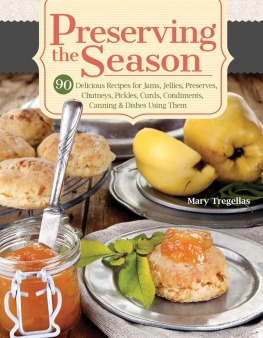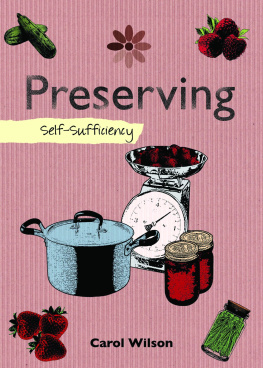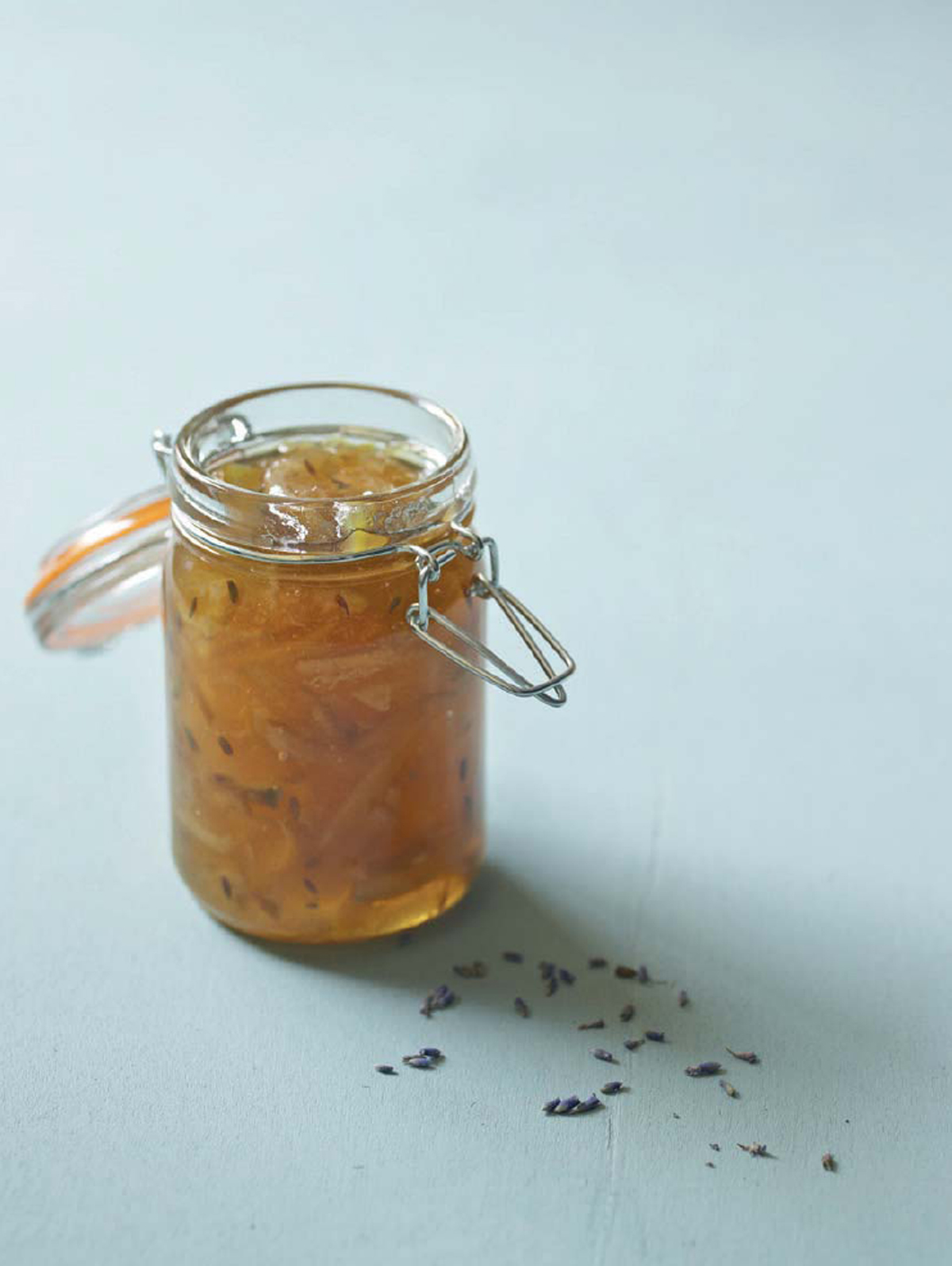Contents
Introduction
Preserving is a way of making sure that fresh foods can be kept for longer, making sure they do not go to waste. This was very important in years past when the vegetable plot outside the back door provided the food that you ate each day. Preserving was a way to keep food on the table in the winter months. Today, when food is grown in huge quantities and imported year-round and commercial preserves are easy to buy, there is less reason to make preserves, yet many of us still love to do it. There is something very special about making a batch of raspberry jam from fruit picked from the garden, or making something delicious from foraged blackberries and apples.
I was brought up in a family where we used to come home to jars of green tomato chutney gracing the table and it was very comforting to see a pantry full of homemade marmalades and other delicacies. Today, knowing where all your food has come from is a rarity. It has made me appreciate simply cooked vegetables and how to make the most of what you have. The freshness and flavor that goes with homemade is not something you can buy.
I have always found it therapeutic and enjoyable to find ways to use up fruits or vegetables through pickling and preserving. I now have my own children and they are always keen to get involved in chopping onions and making jams; it is quite a family affair when we are all in the kitchen! Chutney has not quite been given the thumbs up yet, but they love homemade raspberry jam, particularly in a jam tart.
If you tend a garden plot or have a vegetable patch, it does focus your mind on making an effort to use up your precious produce; a glut of tomatoes or zucchini can very quickly go to waste. We are fairly obsessed in my family with waste, so we preserve, where we can, any food that we grow and we have chickens who eat our leftovers. I do confess to having no tasty answers to using a huge cabbage glut though, which I think many of us picklers find challenging!
There are so many fruits and berries you can eat for free if you know where to look. Foraging from the trees and hedgerows during the summer and fall can be a great way to get out and be active. Children can learn about the seasons and what grows when, and its a great way to spend time together as a family. Start with fruits that grow abundantly near you, as it will be inexpensive to experiment. Sloes in the fall steeped in a bottle of gin makes the most delicious sloe gin to be drunk on a cold winters day. If buying produce, your local farmers market or pick-your-own is the most affordable way to get a good deal on a large quantity of fruit, and you can pick the best of the bunch.
Whatever you decide to make, give yourself plenty of time. Get your jars prepared before you start to cook, since jellies and jams can set quite quickly and you want your jars ready to fill. Once you have tried a few recipes, you will get to understand what sets well and what doesnt. You can start to be inventive with your ingredients and work with what you have at hand. The pot is your oyster and anything goes. I love inventing and mulling over what goes with what; many of my recipes have become favorites over the years and it is great to think they are unique in their own way.
What is Preserving?
Storing food for a long time needs a little bit of science. There are lots of methods you can use, such as curing, salting, drying, and covering with a layer of fat, as well as cooking using sugar, vinegar, or alcohol. All these methods help to prevent your preserves from spoiling and to last as long as you want them to.
All raw foods contain enzymes that help to sustain life as well as breaking them down, causing food to discolor and rot over time. Preserving halts the enzymes developing any further, keeping the food at its best. Preserving also works by drying up or killing off micro-organisms (for example, molds, yeasts and bacteria) that might enter your preserves and spoil your hard work. A high concentration of sugar, vinegar or alcohol, along with cooking at a high temperature, will prevent the growth of micro-organisms.
Mold is not actually harmful to eat but it tastes and looks unpleasant, and can indicate that bacteria are present. Bacteria are harmful as they can cause food poisoning. Yeasts cause foods to ferment, which is not wanted in your jam but can be a good thing in cider and breadmaking. In jams or other preserves, fermenting could mean that unwanted bacteria are present. Hygiene plays an important part in keeping your preserves bacteria-free, which is why sterilizing your jars and lids is so important (see ). There are many ways to preserve fruit and vegetables as well as meat and fish:
Jams
A combination of fruit and sugar cooked until they set to a soft, spreading consistency. The fruits used must contain pectin (see ), which helps them to set. If the fruit is low in pectin, such as strawberries, it can be combined with a fruit high in pectin, such as lemon, to help the jam to set.
Conserves
Similar to jams but are usually a soft set. The best fruits to use are soft fruits such as strawberries and raspberries; these are usually left in sugar for 24 hours to extract their juice before cooking for a short time. Some conserves, such as mincemeats, are made with dried fruits.
Marmalades
Again, similar to jams but are made from citrus fruits, peel and sugar. The peel must be cooked for a long time so that it softens before the sugar is added.
Jellies
Made from the juice of fruit, which is allowed to drip, then the sugar is added and the jelly cooked until set. Jellies can be served in the same way as jam but they are most often served with meat, poultry and cheese.
Curds
Made from fruit juice, sugar and eggs. Eggs are added to thicken the mixture to a rich, soft spreading consistency. Curds are considered a preserve since, traditionally, they were made when there was a glut of fruit, but they are not preserves in the true sense as they will keep only for a few weeks in a refrigerator.
Butters
Made from fruits and sugar that are cooked slowly for a long time until their consistency resembles soft butter. They are used in a similar way to jam but do not keep as long, so should only be made in small quantities.
Cheeses
Similar to butters but are very thick and can be sealed in jars or small molds and turned out to serve with cold meat and cheeses. They keep much longer than butters and improve with storage.
Fruits in alcohol
Many fruits lend themselves to this preservation method, particularly fruits with pits such as cherries and apricots. Like vinegar, alcohol prevents the growth of bacteria. These preserves, like conserves, are delicious served as a dessert or with cheese. Whole fruits, such as clementines (see ), can also be conserved in sugar syrup.
Chutneys
A vinegar preserve made from one or a mixture of vegetables and fruit. Chutneys are cooked for a long time in vinegar, sugar, spices and salt until the mixture is reduced to a pulp, the consistency of a thick sauce. Chutneys need to mature since they improve with time.








![Better Homes - Better homes and gardens you can can: [a guide to canning, preserving, and pickling]](/uploads/posts/book/188232/thumbs/better-homes-better-homes-and-gardens-you-can.jpg)








